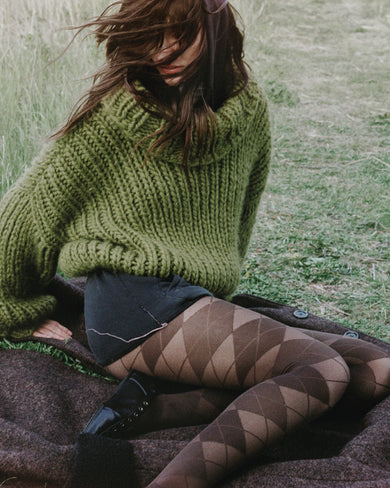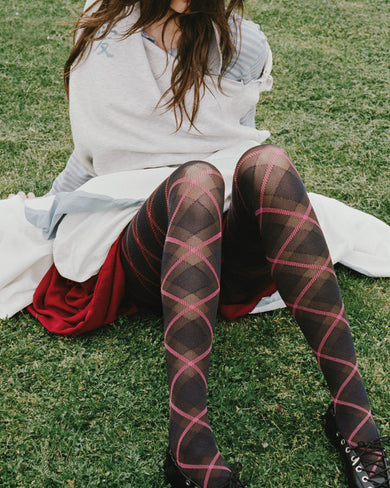Dyeing is the act of changing the color of something with a coloring material. The word refers to the coloring itself, which can be industrial or natural. Today, we will focus on natural dyeing, with Annika Sandstedt, who has helped us dye our limited range of Hilma socks, in three variations. Annika works out of her home in a Stockholm suburb, turning her flat into a dyeing factory on a regular basis. Her love for textiles and natural dyes combines many things that are close to her heart – spending time in nature always on the lookout for plants and flowers that can be used for color experiments.
“The range of colors you can achieve with natural dyes are so much richer than what you can find in a studio using synthetic colors,” she says.
Annika Sandstedt, @jaxtorp
Natural dyeing:
It is possible to dye all non-synthetic fibers, such as wool, silk, cashmere, mohair, alpaca, and angora. But also vegetable fibers such as cotton, linen, ramie, hemp, and viscose can be dyed.
There are several ways to natural dye, including using alum or soy. If you dye in aluminum, iron, or copper pots, the precipitate from the pots will act as a mordant, which means the pigments will adhere better to the textile fiber.
It is also possible to use tannins, usually of vegetable origin, found naturally in acorns, barks, galls, or rhubarb. Using tannins simultaneously dyes the fabric, something that does not happen with the use of alum or soy.
Depending on which pot you are using, the fabric will be affected in different ways. Copper gives a green tint to all colors. Aluminum strengthens all colors and iron gives a grey tone to all colors. These are all criteria to take into consideration.
Steaming:
Steaming is a technique used for drying or heating something in a large pot. Annika uses this technique to dye her fabrics, by laying out a wet cloth on which she places flowers, leaves, or seeds. She then rolls or creases the fabric and uses string to make a bundle, making it as tight as possible. The fabric should be steamed for twenty minutes up to an hour, then you must let it cool before opening it and letting it dry.
Color bath:
This technique consists of dyeing a piece of fabric using a pan in which natural dyes will simmer for about an hour. Left to cool overnight, and then reheated gently the next day. Following this, we can add the fabric that we want to dye leaving it in the bath until it has the color we want.
There are many natural products that can be used to dye such as:
- Cachou (Acacia Catechu), is a tree that grows in Pakistan, India, and Nepal. For dyeing, the bark which is crushed is used and gives a reddish-brown color.
- Osage Orange (Maclura Pomifera), is a low bush/tree that grows in some areas of the United States and the fruit looks like an apple. The bark and branches are used to produce a bright yellow color. Rich in tannins.
- Sandalwood, the tree group of the family Santalum is a fragrant and robust tree with a yellow color. The tree’s wood chips are used for dyeing and give warm pink tones.
- Annatto is a derivative of the Bixa family of trees. These trees grow in the tropical regions of the United States. The seeds are used to add color to food but also for their flavor. It gives a yellow-red tint to the fabric.
- Madder Root. It gives a muted red tone.
- Cochineal is a dried beetle found on cacti in North and South America. It gives a crimson color and has been used for hundreds of years.
- Usable flowers, whether fresh or dried, are primrose, daisy, tagetes, black hollyhocks, and buddleia.
- It is also possible to dye with food or food leftovers such as red cabbage, black beans, the skin and pit of an avocado, blueberries, tea, red wine or turmeric, etc.
Our Hilma socks have been created by Annika, she has used the steaming technique in combination with various natural dyes to achieve the different unique expressions. Shop our Hilma Socks.









